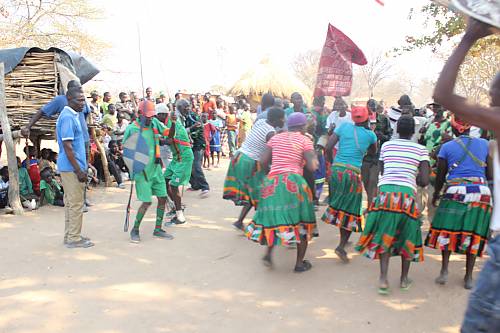Budima dance
Inscribed in 2020 (15.COM) on the Representative List of the Intangible Cultural Heritage of Humanity
The Budima Dance is a warrior dance performed all year round by the Wee people on a number of sombre and spiritual occasions, especially during traditional ceremonies, funeral processions, weddings, initiation ceremonies, the installation of chiefs, thanksgiving, harvest celebrations and ritual activities. The dance is performed with spears, whistles, walking sticks, knobkerries, flutes, ceremonial axes, shields, horns/trumpets, drums and rattles. The performance includes men, women and children: the men represent skilled soldiers or fighters with long spears jumping up and down while running in and out of the inner circle of dangers, flourishing their spears in mimic of war, while others blow the sets of one-note antelope horn flutes/trumpets and shout chants. Others play big and small drums. The women – adorned in beaded necklaces and bangles, with rattles on their feet – sing along and dance energetically. The related knowledge and skills are transmitted to young people through observation and their participation in the dance. Young people are also taught about the importance of the dance, how to perform it, and how to make some of the instruments during initiation ceremonies. The Budima dance serves as a unifying factor for the communities concerned, who take great pride in the dance and can join in with the dancers at any point during the performance.










